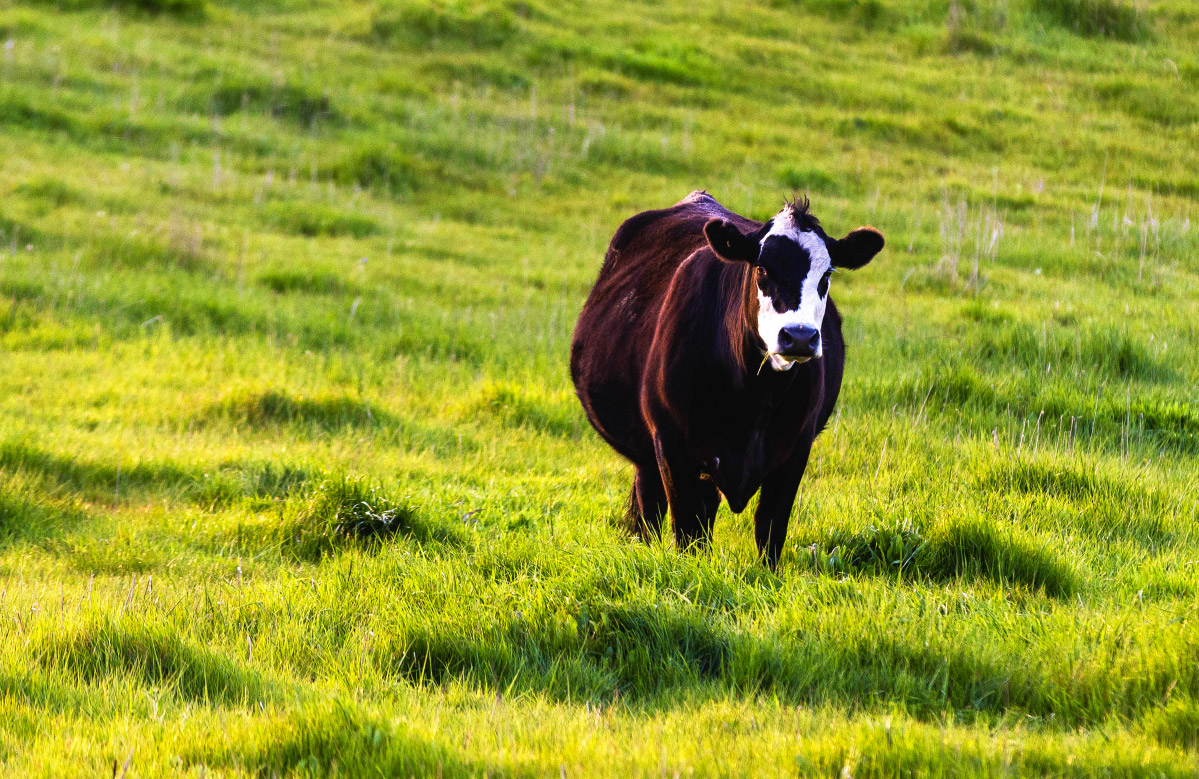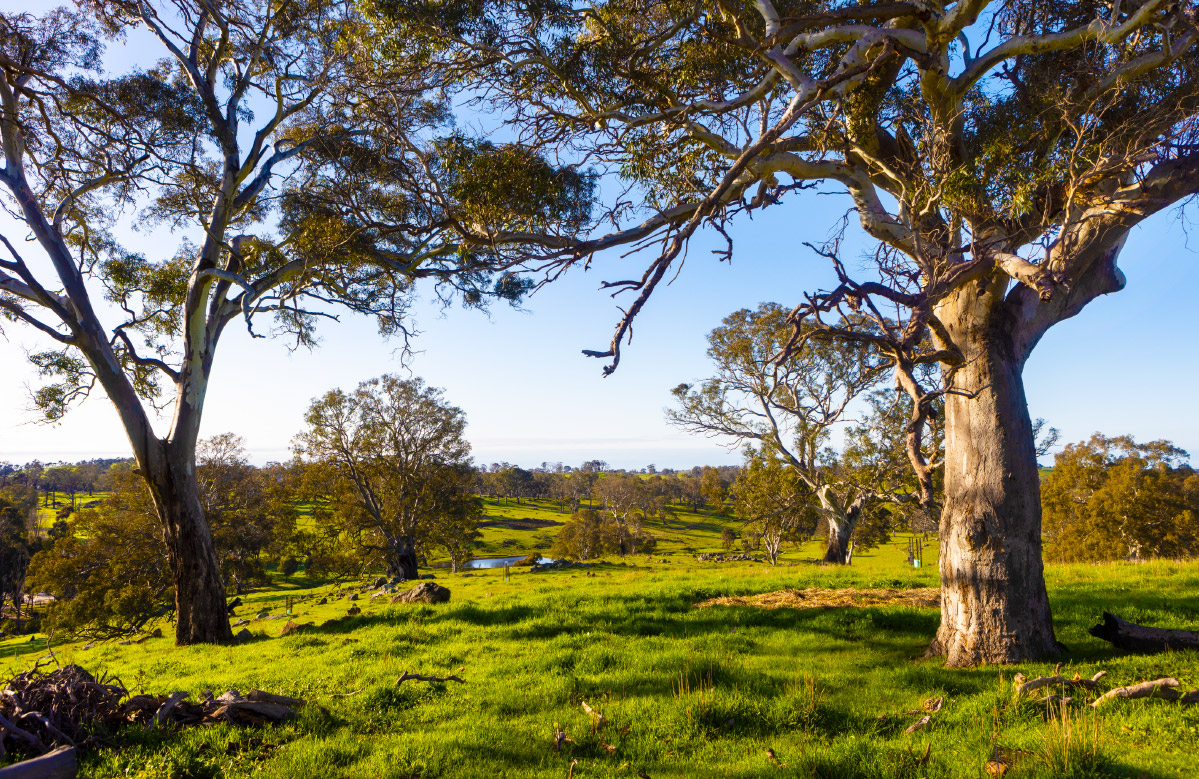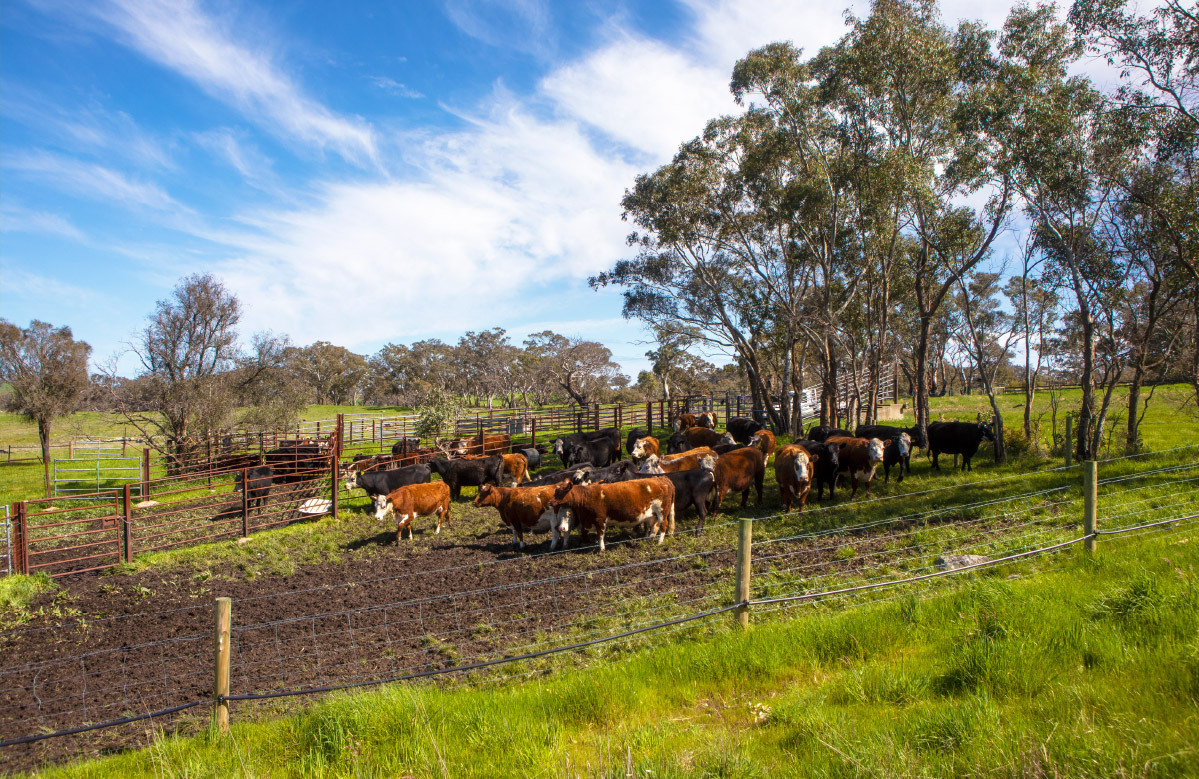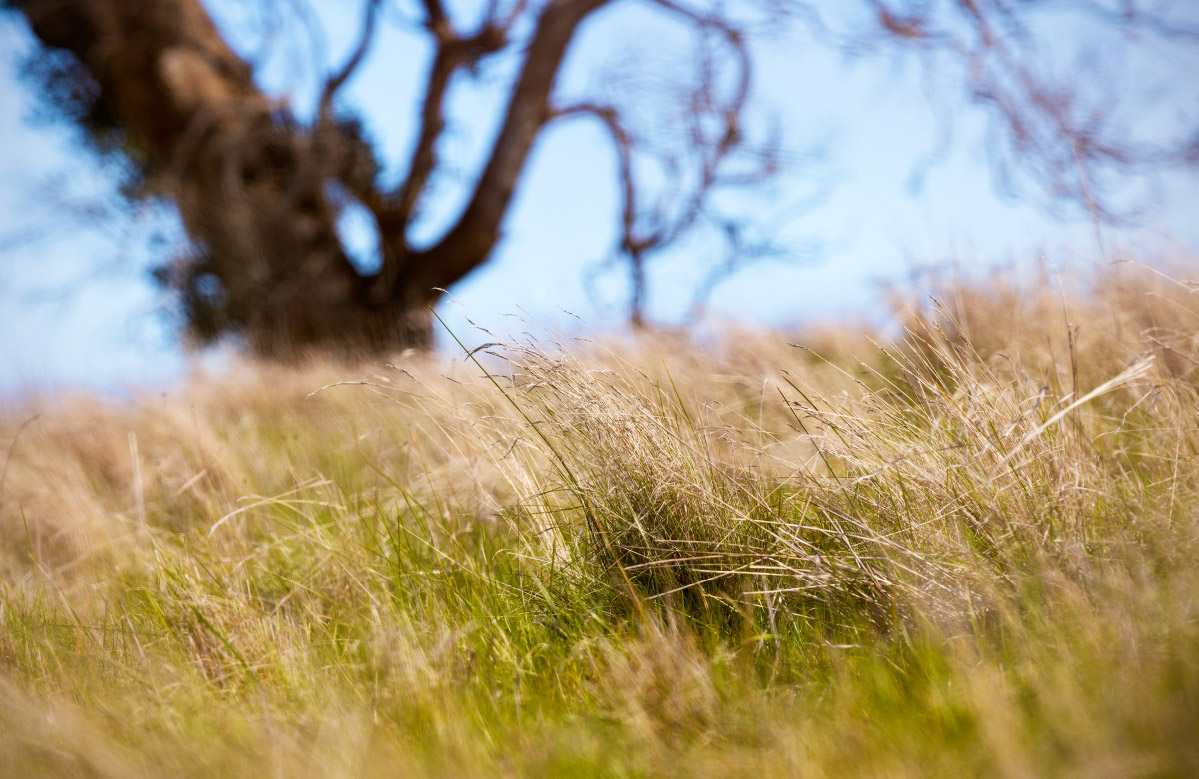Sustainable Farming
Premium beef that is good for the environment. That is our number one goal at Taminga, and it is why we do what we do.
Our cattle are all raised on our Adelaide Hills property, using practices that do more than reduce the impact beef grazing has on the environment, they genuinely improve it.
You might wonder how we do it. Quite honestly, it’s the cattle doing most of the work. They graze for two to three days before they are moved, with each paddock resting and regrowing for 30 days.
This is regenerative farming.
scroll to read more


We take a whole of system approach to sustainability by integrating modern grazing practices with these core activities:
- Regenerative grazing
- Revegetation and replanting
- Watercourse management
- Natural inputs and fertilisers
Regenerative Grazing
Each rest period encourages the grass through photosynthesis to drive sugars to the roots, drawing in nutrients and improving the soil. Over time the roots get deeper, carbon is absorbed and in turn reduces emissions, and more water moisture is retained.
This cycle produces healthier soils, increases biodiversity of the pastures, and absorbs carbon. All good stuff for the environment, and all the hard work is done by our grazing cattle.
Revegetation and Replanting
We have improved the biodiversity of our local environment by revegetating around 5% of the property with native species and replanting areas such as shelter belts.
Our open paddocks have been graced with 400 native trees along with cattle-proof guards to provide stepping-stone habitats and shade for animals.
Watercourse Management
We have fenced off the major watercourses on the property to exclude grazing our stock. This ensures clean run-off into the Hills catchment, and reduces the amount of fast-flowing water during rain events, limiting erosion and topsoil loss.
We have a program of fencing off dams, using pumped stock water for stock watering, which improves water quality and creating mini-wetlands in the dam zones.


Natural Inputs and Fertilisers
Sustainable farming means reducing inorganic inputs such as super-phosphate, chemical herbicides and pesticides.
Using animals to graze intensely, as we do, provides that useful natural fertiliser, manure, and brings the micro-ecosystem of soils and plants into balance, eliminating the need for herbicides and pesticides.
Our grasses are more resilient, and we no longer eliminate ‘weeds’ as all of our plants become beneficial in a well-balanced ecosystem.
Win-win!
Modern Sustainable Farming Practices
These activities continuously improve our local micro-ecologies in the soils and water systems, as well as the local ecosystems of plant, animal and insect diversity. This contributes to broader ecosystem sustainability through better water management, providing new and connected habitats for fauna across the landscape, and increasing plant and animal biodiversity.
This is beef grazing that tangibly improves the global environment.
To learn more about the background of our grazing practices, here are some useful resources: